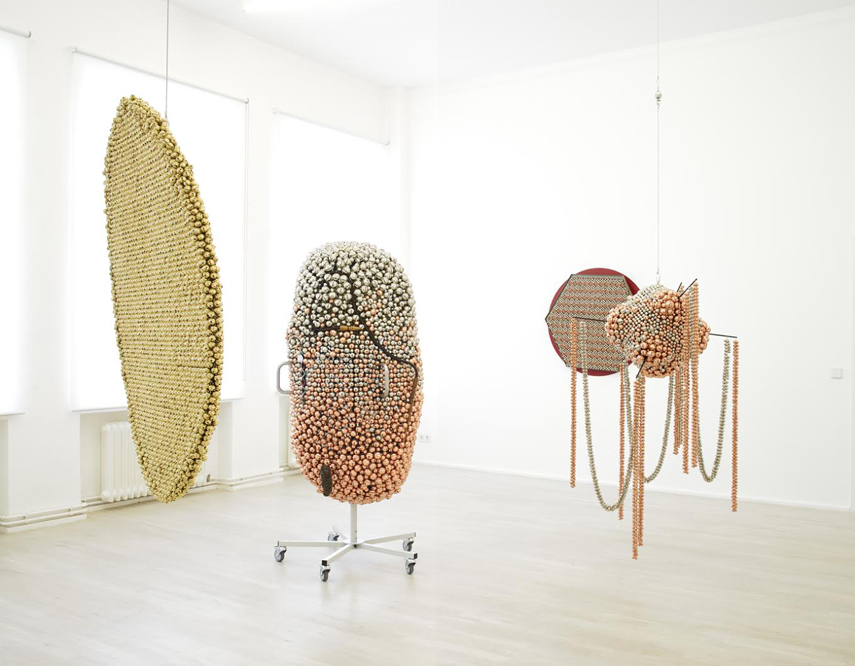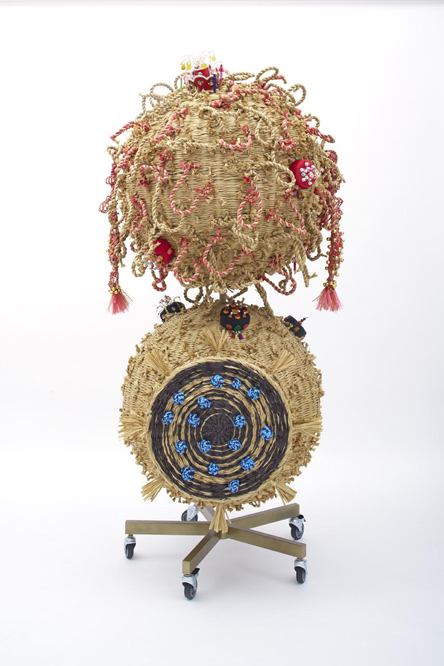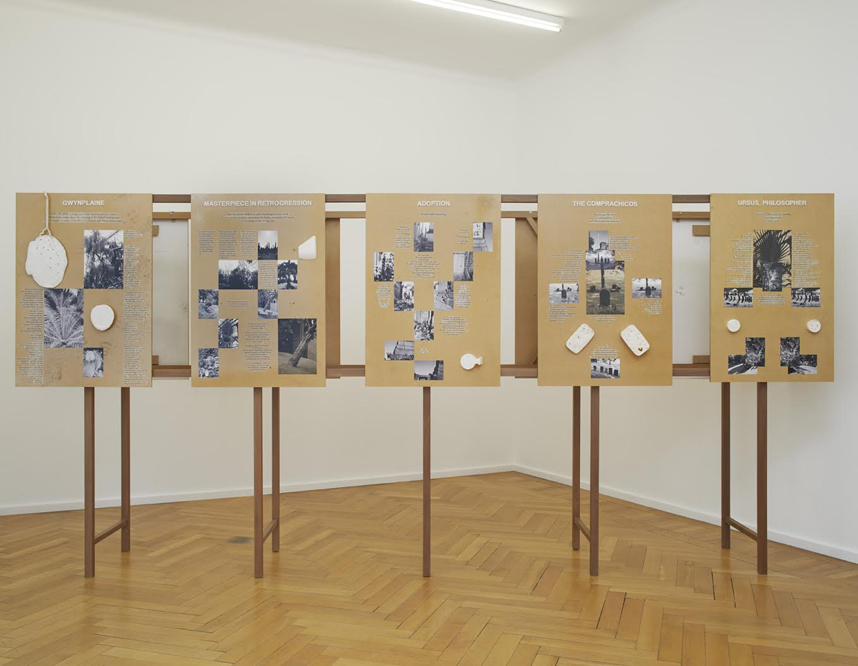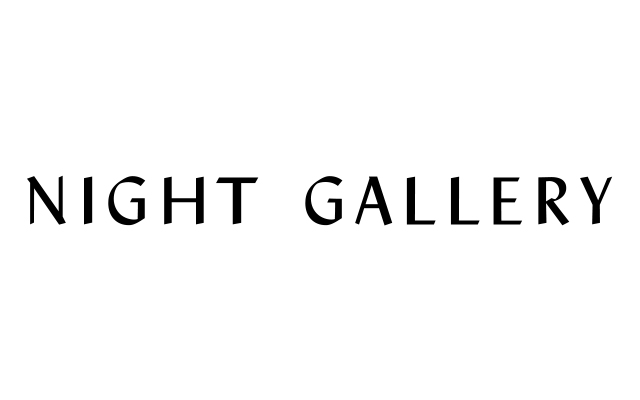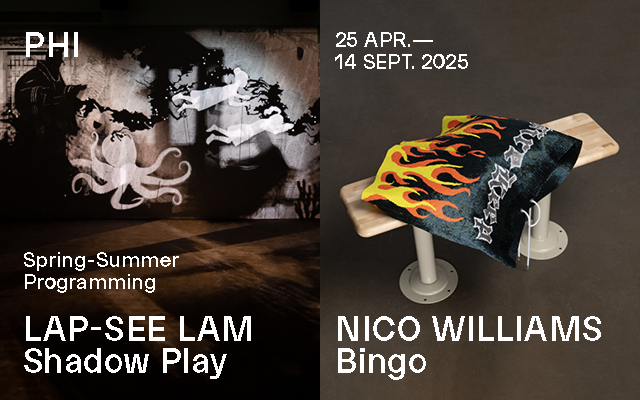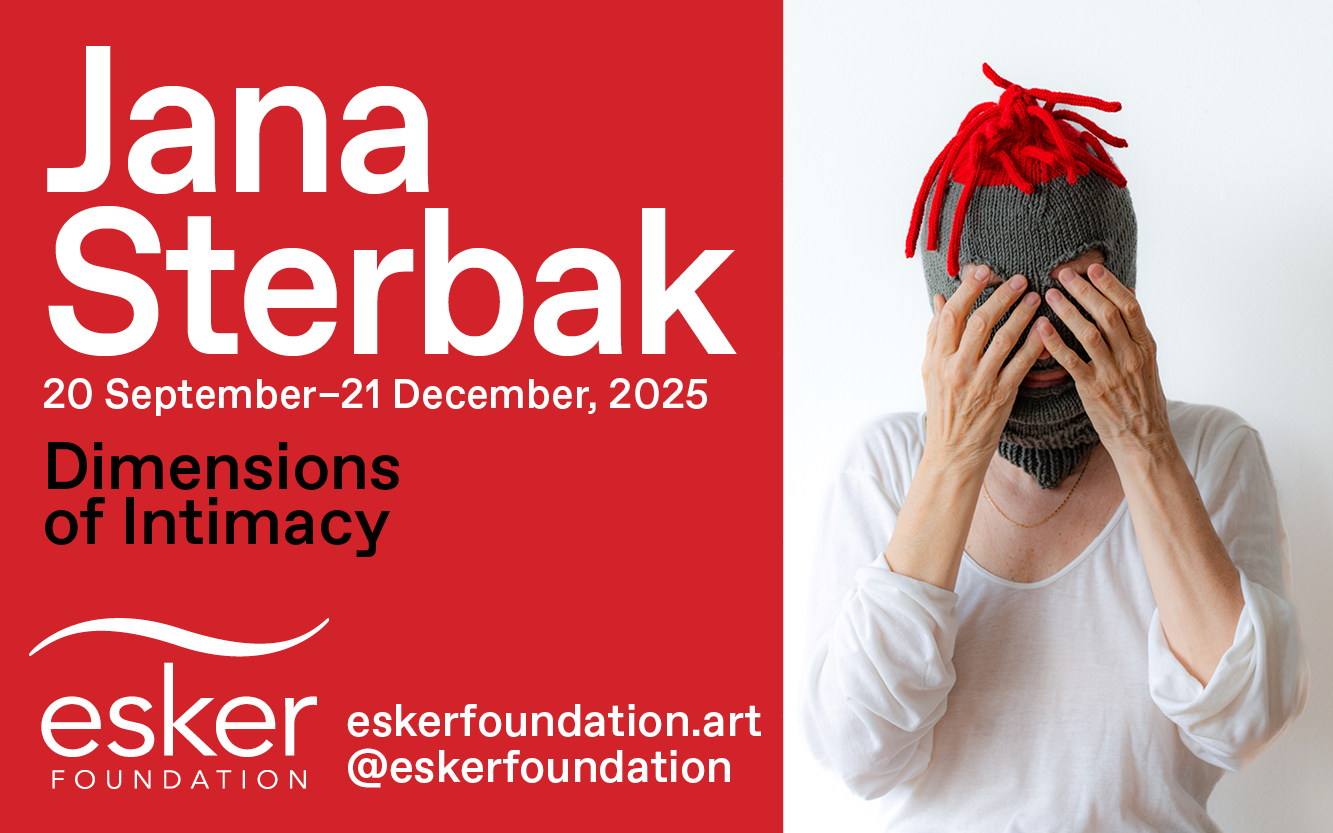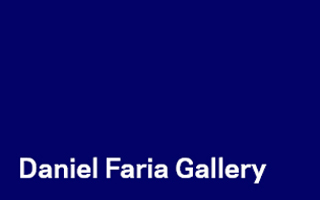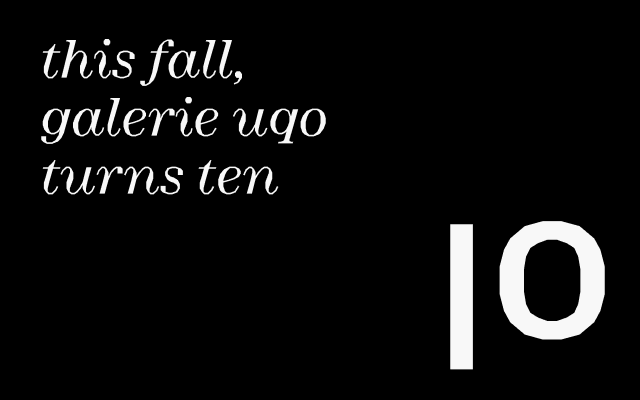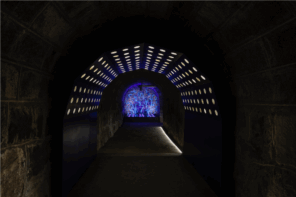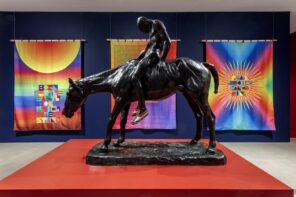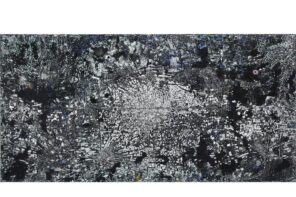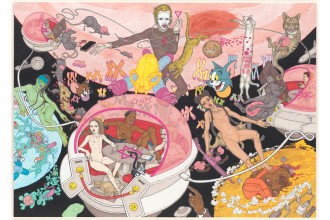How the disfigured transfigure, how the formless become heavenly […] this strange spectacle had a transparence of an avatar.
– Victor Hugo, The Man Who Laughs, 1869
At the end of summer 1868, the French writer Victor Hugo completed his novel The Man Who Laughs (L’homme qui rit) while in exile on the British island of Guernsey. Set in late-seventeenth-century England, it’s the story of a young man named Gwynplaine who was physically deformed as a child, and thus permanently appears to be wearing a “terrible laugh.” Abandoned in childhood, Gwynplaine finds refuge in a group created by other outcasts he discovered. First is Dea, the blind baby that he found in the lap of her dead mother. The two became unlikely twins, a naïve and complete pair. Then there is Ursus, an old and solitary vagabond entertainer living in a caravan with his tamed wolf named Homo. Ursus, Homo, Gwynplaine, and Dea travel England as itinerant entertainers, gaining recognition from Gwynplaine’s hilarious and monstrous face. When our protagonist briefly rises in social class, he leaves his motley group only to return to their refuge. Tragically, however, one of his homecomings finds his Dea dying, missing her soul mate. She dies in his arms before he throws himself to the sea.
In 2013, during a three-month residency in Glasgow, Korean artist Haegue Yang listened to this narrative as an audio book while at work in her studio. Initially, the story served as a soundtrack to the artist’s labor. But its themes of displacement and otherness hit close to home for Yang, eventually coming to inspire a body of work that was on view this summer at Galerie Wien Lukatsch in Berlin, titled Temporary Permanent.
What links this contemporary work, made in Glasgow by a Korean artist who’s based in Berlin, with its source, a nineteenth-century French novel set in seventeenth-century England authored in England by a French writer? The displayed works composed an exciting rebus in which viewers can attempt to follow traces of the text, piquing a literary probe in search of its subjects’ conjugation into contemporary art.
These connections are occasionally made plain. A sculpture titled The Glasgow Tales of Laugh (2013) directly invokes Hugo’s text, and offers essential keys to approach sculptures inhabiting adjacent galleries. Assembled from ten MDF boards on which the artist organized and pasted several excerpts from the story, The Glasgow Tales are interspersed with photographs of Yang’s wanderings in Glasgow’s Botanic Garden and Necropolis. Even though Hugo’s text and Yang’s photographs appear to have an image/caption relationship, the links between the two aren’t immediately clear. However, a precise theme does emerge: taming as transformation. In observing the various photographs, I quickly notice an observed duality between natural vegetation patterns and human construction. There’s an image of gravestones set in an overgrown cemetery, for instance, or a glass roof through which trees and sky are made visible. Nature and urban environments occupy the same boards that include descriptions of the novel’s characters who represent the “wild” as well as the “tame,” the “savage” and the “civilized.” Ursus’s tempered Wolf, for example, named “Homo” (aptly, perhaps, as in homosapien), is portrayed as more “civilized” than human beings. A description of Gwynplaine, who serves as an example of the fine line separating the wild/tame dichotomy, also appears. As a human being, he is the result of nature, but his disfigured body is the result of mutilation by human hands. We see this again when he moves up in social class and has a respectable title. Even though his social status has changed, he has not. Beside Yang’s photographs, we do not see these characters as either/or, but rather as nuanced intersections.
The same mingling is proposed in two other sculptures, this time embodied through material assemblage rather than visual patterns and text. The Intermediate – Pair Incarnate, Gwynplaine and Ursus, and The intermediate – Pair Incarnate, Gwynplaine and Dea (both 2015) establish different relationships between character and subject. The sculptures bring Hugo’s protagonists into three dimensions (though without faces) through woven artificial straw using a traditional Korean handcraft technique. The artificial straw (an imitation of nature) is used to compose an astonishing assemblage that celebrates a Korean ancient savoir-faire, asserting the technique as a medium of contemporary art. The latter sculpture, depicting Dea and Gwynplaine, is constituted of two spheres, which seem to illustrate Hugo’s frequent associations between the couple and two celestial bodies. One of the globes is sleek while the other is bushy, strewn with straw frizz. The dichotomies that appear throughout the narrative emerge clearly, here, artificial naturalness (reinforced by plastic plants attached to the sculpture’s base), tamed wilderness, civilized savagery.
Finding yourself in another’s narrative is a condition of being a reader. Yang found herself in Hugo’s text, and used its resonances to produce an inter-semiotic translation, interpreting verbal signs through a non-verbal signs system. She’s using her own aesthetic vocabulary, one bearing a resemblance to assemblage, with each component uniquely phonetic. Seemingly abstract, Yang’s artworks are like shells, structures she can re-use by filling them with different contents (here Hugo’s fiction). For instance, one of the exhibition galleries presents several sculptures made of a multitude of little bells that, under the light of The Man Who Laughs, seems to refer to the jester, the entertainer. However, Yang’s used bells in previous works. Indeed, certain elements recur in several of Yang’s pieces and produce variable meaning. (We can briefly enumerate among this vocabulary the recurrence of venetian blinds, light bulbs, garlands, and drying racks.) They do not hold a fixed symbolic meaning but rather enjoy a changeability. Yang likes to play.
Gwynplaine found himself once again deformed, or reformed, by Yang’s hands, mimicking the sculptural method from which his facial structure originally appeared: “[…] from this deep and powerful sculpture emerged this mask, Gwynplaine.” The themes of masquerading, self-representation, and artifices have appeared in Yang’s work before, investigating the figure of the shaman who displays his inner self through accoutrements. Here, on the contrary, the man who laughs is forced to wear a permanent mask he did not choose. With these two sculptures, Yang proposes an outward appearance for these characters. Faceless, they are constructed through their relation to one another, where they balance, differ, and intersect.
In her 2006 video, Squandering Negative Spaces, Yang’s script reads, “To tame myself in the world of the others, or perhaps to assimilate myself, this is a very lonely process of self-colonization. This is a process of communing with a place. A process of overcoming the otherness and learning about the place. A process of making something unknown known.” Here taming is not just an issue of the wild and the civilized; rather, it’s a mental process one experiences when facing new encounters and inhabiting strange environments. While in residency in a foreign city (Glasgow), Yang’s personal reflections on foreignness and homelessness find a troubling embodiment in Hugo’s narrative. Gwynplaine, displaced from his itinerant home (Hugo describes his sense of home as being rooted in his pack, despite their constant moving) and resituated in the upper class, provokes in him a strong disorientation and homesickness. Hugo’s narrator concludes, “The solitary is a diminutive for the savage, allowed by the society. […] Remaining somewhere seemed for him to be taming.” By referring to an impersonal subject (the solitary), many of Hugo’s statements allow an easy contemporary re-reading, and in Yang’s case, appropriation. Knowing the narrative, the visitor can perhaps infer the inner dialogue Yang had with the text.
Savvily and subtly, The Man Who Laughs looms throughout the exhibition in dialogue with the artist’s concerns and obsessions. By invoking another voice, that of Hugo, and finding resonances of her experience in a historically distant work of fiction, Yang allows herself a relief from her own subjectivity. Hugo used the same strategy himself by expressing his conditions through fiction. The Man Who Laughs seems to be heavily inspired by Hugo’s biography (the most evident examples are his political exile for republicanism, and his fascination and fear of the sea where his daughter, like Dea, drowned), and through fiction, it speaks in favor of the writer’s convictions and struggles (against monarchy, class system, and for free speech). The feeling of “home” and the reverse feeling of displacement appear in many contemporary practices, often through autobiographic storytelling. Haegue Yang, however, has chosen to estrange herself from the details of her biography, instead representing these intimate feelings of oneness and aloneness as universal spaces through the material of the story of fictive others.


